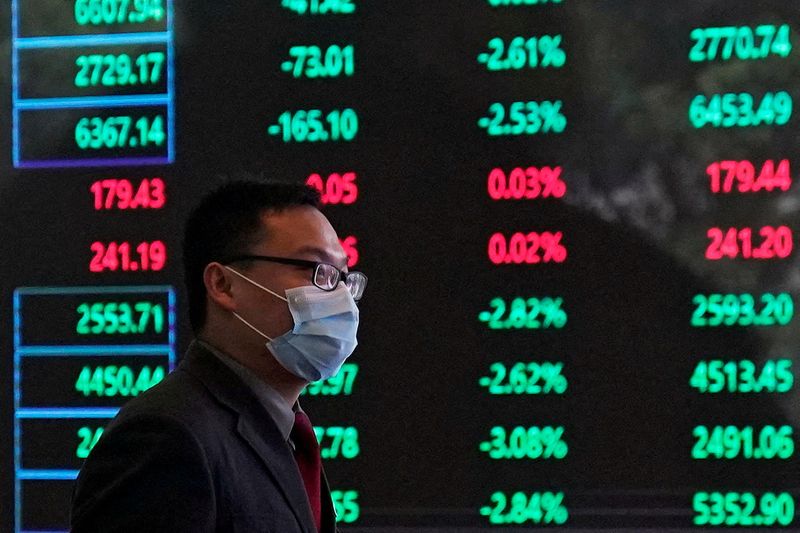By Tommy Wilkes
LONDON (Reuters) - Emerging market borrowing led by China inflated the global debt mountain to a record $303 trillion in 2021, although the global debt-to-GDP ratio improved as developed economies rebounded, the Institute of International Finance said on Wednesday.
The $10 trillion rise in the global debt pile was down from the $33 trillion increase in 2020 when COVID-19-related expenditure soared.
Global debt-to-GDP - https://fingfx.thomsonreuters.com/gfx/mkt/akvezxgblpr/bis%20chart%20one.PNG
But more than 80% of last year's new debt burden came from emerging markets, where total debt is approaching $100 trillion, the IIF said in its annual global debt monitor report.
That means emerging markets have started 2022 facing record high refinancing needs just as the Federal Reserve prepares to raise interest rates after years of record low borrowing costs.
"While the pace of accumulation slowed in 2021, EM government debt levels remain elevated," the IIF authors wrote.
"This slowdown is in line with the moderation in government budget deficits seen over the past year. Yet, since the onset of the pandemic, some EM governments seem more reliant on off-budget borrowing," they said, pointing to rising non-financial corporate debt levels in China, Russia and Saudi Arabia.
Most of the jump in individual country debt-to-GDP ratios occurred in emerging markets.
Emerging market debt ratios surge - https://fingfx.thomsonreuters.com/gfx/mkt/gdpzybrznvw/BIS%20chart%20two.PNG
The IIF also noted that the vast majority of additional emerging market debt last year was in local currencies, and its share the highest since 2003.
This came at a time when the pandemic slashed foreign investors' appetite for local currency assets -- at 18%, foreign participation in local bond markets is at its lowest since 2009.
Emerging markets rely on local currency debt - https://fingfx.thomsonreuters.com/gfx/mkt/byvrjeogwve/BIS%20chart%20three.PNG
Those countries heavily reliant on external borrowing face greater risks from wobbly market sentiment and the rise in U.S. interest rates.
Global indebtedness soared during 2020 as governments spent huge sums to revive their economies, bail out businesses and keep their citizens employed.
While global debt levels remain very high by historical standards, economic recoveries and higher inflation helped improve the picture slightly last year.
The global debt-to-GDP ratio fell to 351% in 2021 from an all-time high of more than 360% in 2020, although last year's rate is some 28 percentage points above pre-pandemic levels.
Issuance of debt carrying an environmental, social and governance label boomed as investors piled into sustainable debt markets.
ESG-labelled issuance topped a record $1.4 trillion, nearly double the pace of 2020, although at around $3.4 trillion the ESG debt universe accounts for just 1% of global debt, IIF said.

Demand for ESG products is expected to increase that share. The IIF sees total global ESG debt issuance reaching $1.8 trillion in 2022 and potentially $7.2 trillion by 2025.
Global ESG-labelled debt issuance - https://fingfx.thomsonreuters.com/gfx/mkt/znvnendylpl/BIS%20chart%20four.PNG